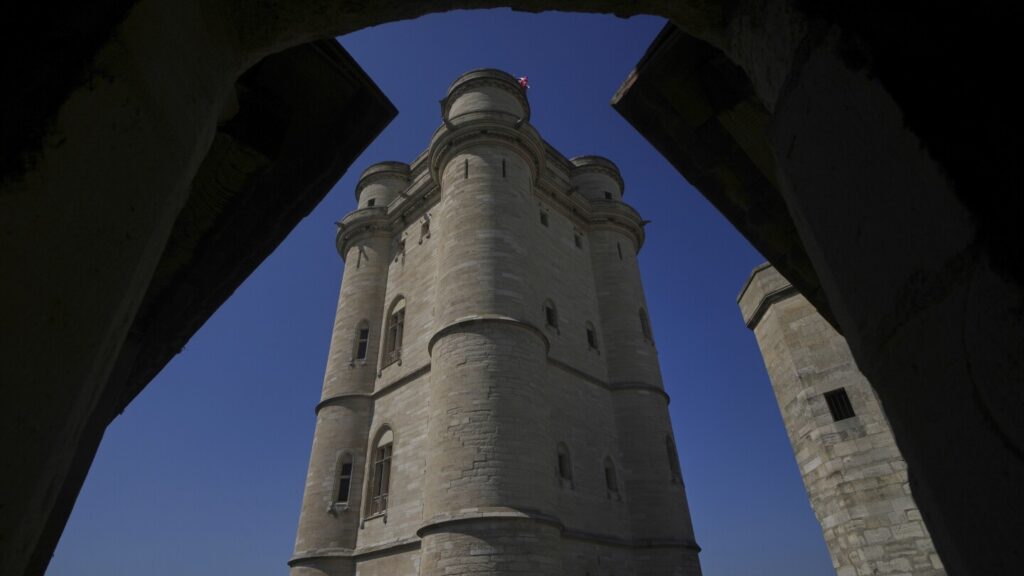PARIS (AP) — For visitors to France overwhelmed by the crowds at Versailles, the Paris region offers a calmer chateau experience: The fortress of Vincennes, a medieval royal residence with the tallest keep in Europe that once held renowned figures such as the Marquis de Sade.
The massive fortress east of Paris, just 15 minutes from the city center by metro, immerses visitors in history as soon as they walk through the drawbridge.
The castle is much older than Versailles and closer to Paris, local guide Cindy Smili-Yesli said. “It’s a fairly quiet castle,” she said. “The visiting conditions are much more pleasant. Here, you can really take a close look at every detail of the decor in the keep.”
Vincennes welcomes up to 145,000 visitors a year, when over eight million visit Versailles.
Europe’s tallest keep
The Chateau of Vincennes was first built in the second part of the 14th century, as the Hundred Years War was raging between the kingdoms of France and England, on the location of a royal manor that was used as a hunting base in the nearby woods. French King Charles V, who ascended the throne in 1364, chose to make it his residence.
The immense 52-meter (171-feet) keep was meant to show the extent of France’s power.
“It has been a powerful symbol of the royal monarchy since the mid-14th century,” Smili-Yesli said.
But Vincennes was also a symbol of an historic English success against France. Henry V of England and his court moved into the chateau for some time after his successful military campaign, in accordance with the 1420 Treaty of Troyes. Henry V died at Vincennes in 1422. He was 35.
“The legend of Vincennes says that his body was reduced to ashes in the castle’s kitchens, and his bones were recovered,” Smili-Yesli said.
Famous figures imprisoned
From the 15th century, the keep housed a prison. Famous captives included future King of France Henri IV, accused of plotting, writer and philosopher Denis Diderot, and the Marquis de Sade, known for his writings on sex.
“The Marquis de Sade was imprisoned in the keep of Vincennes in the mid-to-late 18th century because of his writings and his actions as a libertine,” Smili-Yesli said. “He was originally held on the first floor of the keep. But as he did not get along well with one of his cousins, the Count of Mirabeau, the jailers, to punish him, moved him down to the ground floor into a much less pleasant cell, subject to cold and damp.”
Many common law prisoners were also imprisoned at Vincennes, including women, especially during a series of scandals in 1679 to 1680 involving poisoning and witchcraft. Some graffiti left by the captives can still be seen on the stone walls.
A Gothic Holy Chapel
Facing the keep, the spectacular Holy Chapel, built in the Gothic style, features stunning stained glass windows from the mid-16th century which depict the Apocalypse through various spectacular scenes.
The castle served as a refuge for the royal family at shaky times. In 1648, when a series of rebellions broke out in the kingdom, young King Louis XIV settled there.
The Sun King later wished to move further away from Paris, which had been hostile to him during that period. He went on to build a palace in Versailles, west of the French capital, and left Vincennes with his court in 1682.

